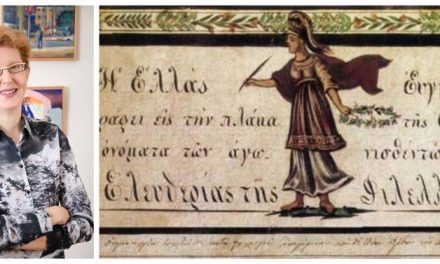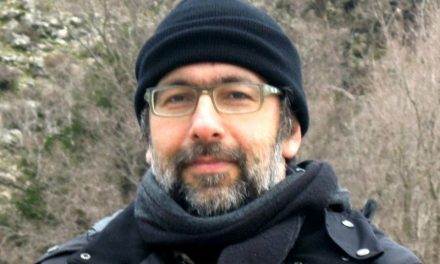Davide Rodogno is Professor of International History at the Graduate Institute, Geneva (IHEID). His doctoral thesis was published in English under the title “Fascism’s European Empire” (Cambridge University Press, 2006). He is also Director of the Executive Certificate “Advocacy in international affairs”, and Faculty Associate of the Centre on conflict, development and peacebuilding, and since October 2020 he is the Head of the Interdisciplinary Programs of the IHEID. Rodongo’s research interests focus on the history and politics of international organizations, humanitarian intervention, history of conflicts and transnational movements, NGOs and philanthropic organizations. Among his publications are “Against Massacre: Humanitarian Interventions in the Ottoman Empire (1815-1914)” (Princeton University Press, 2015) and Night on Earth – Humanitarian Organizations’ Relief and Rehabilitation Programmes on Behalf of Civilian Populations (1918-1939) (Cambridge University Press, 2021), and the volume Humanitarian Photography: A History which he co-edited with Heide Fehrenbach.
Professor Rodogno spoke to Rethinking Greece* on the limitations and realities of humanitarian operations in Greece around 1922, the similarities and differences between humanitarian interventions of the 19th century and contemporary interventions, the role historians can play in policy-making, his research on the stereotype of “Italiani, brava gente” and finally, on how multilateralism plus prevention is a way forward in the issue of humanitarian interventions.
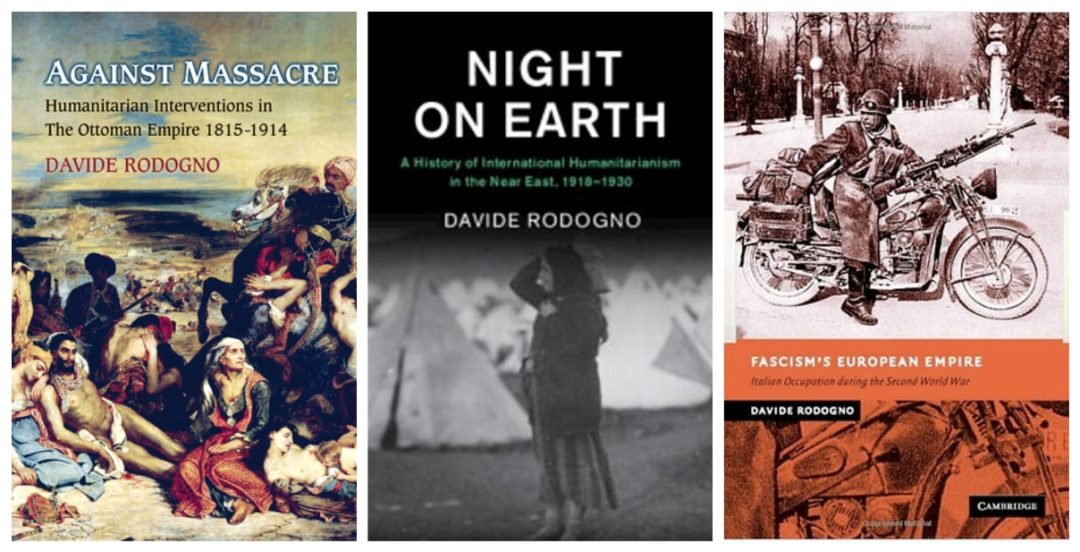
This year marks the 100th anniversary of the signing of the Treaty of Lausanne, the final treaty concluding World War I, and a treaty that mandated the Greek-Turkish population exchange. What can you tell us about international humanitarian operations in Greece around 1922, when the country faced the arrival of 1,2 million refugees from Asia Minor?
One might wonder how it was possible, that humanitarian organizations active in Asia Minor and other areas of the Ottoman Empire since 1919 – which had been witnesses to the escalation of violence against civilian populations taking place in Asia Minor and Anatolia – were caught unprepared when the 1922 Catastrophe happened. However, one must keep in mind that these institutions were not designed to prevent. Things were not so different from how NGOs work today, in 2023: they mostly act ex-post; tragedy happens and then they react, and it was exactly the same thing in 1922. Moreover, during the summer of 1922, during the few months after the Catastrophe of 1922 and the beginning of 2023, there were many different but concomitant situations. Greek orthodox populations coming from Thrace moved in caravans, with donkeys, a few belongings, their blankets and a few other things. They, however, had some resources to sustain themselves, while those fleeing from Asia Minor and from Anatolia had nothing at all; what is more, the men were detained in Turkey and those allowed to flee were mainly women, children and elderly people. International humanitarian institutions could do something for some of these people, but the vast majority of them were on their own. Local and international humanitarian institutions facing this situation must have felt overwhelmed. In late 1922, they attempted channeling and controlling the flow of refugees, nonetheless chaos prevailed.
As I said when I was recently invited by the American School of Classical Studies, the principle that humanitarian institutions agreed upon – as we can read in many documents written in French – was “la dispersion”, that these people were dispersed. The biggest humanitarian operation, led by the American Red Cross (ARC), startedin January 1923 and lasted approximately ten months. But it took even the mighty ARC four months to set the operation up, and that should be considered a very rapid reaction. This speedy organization was possible because the American Red Cross had been there during the First World War and was already very well acquainted with Greek territory, Greece’s communication and transport lines, society, donors and authorities. So, on the one hand, we can say that very little was done for the 1.2 million refugees of Asia Minor in the months that preceded the end of theGreco-Turkishwar and the signing of the Treaty of Lausanne. On the other hand, these institutions did what they could. And I don’t find it surprising that they focused on orphans, on children, because that was something that they knew how to do. They didn’t have the money or the know-how to deal with adults, especially over a prolonged period of time. Humanitarian institutions embarked on a few big-scale construction projects, but they eventually ran out of money.
We should not forget that Greece was the defeated power; it had lost a war that had taken place with the blessing and responsibility of the Great Powers. Back in 1919, nobody had anticipated the victory of the Turks, and both the Greek government and the Great Powers had to deal with Turkish authorities dictating the terms and conditions of the peace treaty. The weakness of the Greek government as well as the institutional and political crisis in Greece created the conditions for a power vacuum that allowed humanitarian organizations a certain freedom of action in the setting up of relief and rehabilitation programs. On a final note, we should not forget that many refugees survived without being helped by the international community. Their agency and surviving strategies are important but unfortunately remain understudied.
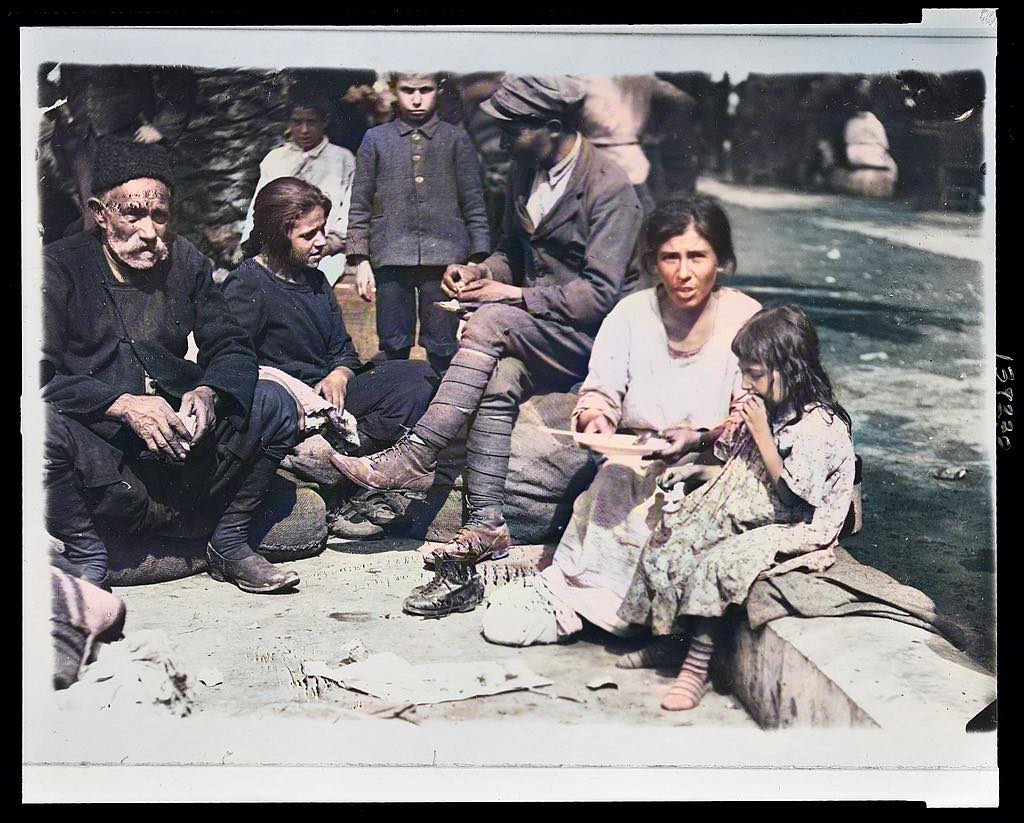
What do you think about the collaboration between the Greek government and the international organizations? Was it a smooth collaboration? Was it more top down, rather than on an equal level?
It was top down and the Greek government had no option other than to accept it, because it was either that or nothing, in which case Greek authorities were aware that they would’ve been worse off. So they accepted this “benevolent” help. Of course the organizations that came to Greece intended to alleviate suffering, but this help came with strings attached. International institutions interfered in a colonial way, since the Greek government and authorities were in a subaltern position with respect to those who were giving drugs and medicine, those who were making a humanitarian operation possible. So the position of the Greek government was difficult; in my view Greek authorities coped wisely.
As to the Refugee Settlement Commission (RSC), I would like to point out that this was not a humanitarian institution. The Greeks were paying for that, though they had no control over it. And we should not forget, as scholars tend to, that many refugees dreamt of going back to their villages and their cities in the Black Sea region, in Asia Minor, in Istanbul, or wherever they came from. Others would have much preferred to emigrate elsewhere, to the United States of America or Canada, while some of them wanted to go to Australia, Latin America, France, and Great Britain. Macedonia was very far from topping their list of preferred places of permanent settlement.
You studied the history of humanitarian interventions; do you think there is a common thread connecting humanitarian interventions of the 19th century – when this practice first emerged- with contemporary interventions?
I would like to point out that I define humanitarian interventions as operations that are carried out by governments against a state authority and that have a coercive nature; they are not United Nations peacekeeping operations. I do see continuities and change. In the 19th century, the state authority, the government against which other governments took action is the Ottoman Empire, the Sultan and the Sublime Porte. Ottoman authorities were accused of being the perpetrators of massacres and atrocities, of “horrors”. The intervening powers, the European ‘Great’ Powers, thought they had the moral, political, and juridical authority to interfere in the internal affairs of a sovereign entity – in this case, of an empire, deemed – at best – ‘half-civilized’. After WWII, fundamental texts that did not exist during the 19th century were ratified: the Genocide Convention of 1948 and the Universal Declaration of Human Rights of 1949. ‘Massive violations of the most basic human rights’, is a terminology that did not exist in the 19th century. When Western legal scholars referred to massacres and atrocities in the 19th century, they referred to the equivalent of crimes against humanity, though in their imaginaries the latter were only applicable to Christians, and some of them openly spoke of crimes against Christianity. In fact, the only humanity on whose behalf an intervention could have taken place were Christians, Ottoman Christians in particular. I believe we live in a different juridical context today.
The very idea of breaking the sacrosanct rule of not interfering in the internal affair of a sovereign state represents a continuity between the 19th and 20th century – in particular the 1990s – and the early 21st century. The case of Libya comes to mind. Among other continuities we can mention is that only very powerful states performed and continue to perform humanitarian interventions.
There are also subtle similarities in the way that alleged perpetrators of massive violations of the most basic human rights are portrayed today and thy way in which Ottoman authorities and their Muslim populations were depicted in 19th century European media: Muammar Gaddafi became a tyrant, his government a “regime” and the intervention culminated in a regime change, which is per se extremely problematic, but is from my point of view very similar to what imperial powers tried to do throughout the 19th century. Whenever one of these 19th century interventions ended, they imposed a profound change of political administrative rules on the Ottoman Empire. That was the case in Lebanon in 1861, as was the case in Crete in the 1870s. This would also be the case later on in Crete at the very beginning of the 20th century, with the then expulsion of Cretan Muslims and the setting up of an international administration in the Ottoman provinces of Macedonia too. There are also similarities in terms of the language: the ‘good governance’ language of the 1990s is very close to the systematic reference to ‘good government’ the European powers used in the 1860s-1890s.
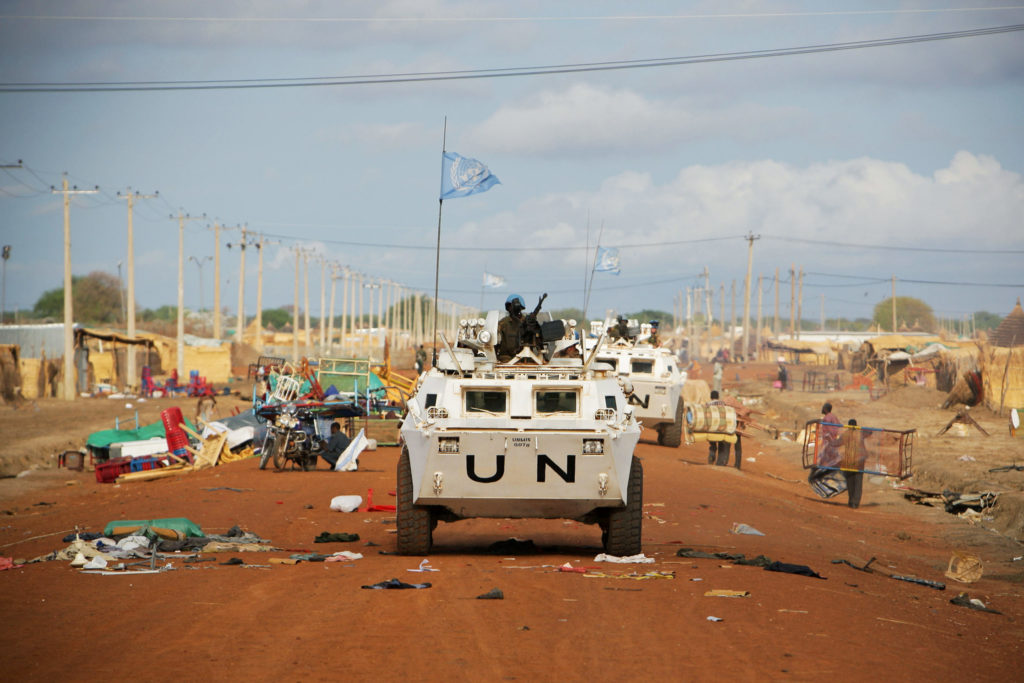
Could there ever be now, in the 21st century, a humanitarian intervention against a powerful sovereign entity –like it happened with the Ottoman Empire in the 19th century?
No, there couldn’t be, this is definitely a tacit rule. Think about the annexation of Crimea to Russia in 2014. The dispossession of part of Ukraine’s territory with the pretext that this was Russian territory would never end up with a humanitarian intervention. You can go further back to the early 1990s, think about Chechnya or Tibet or further back to the Cold War. You will find out that whenever the interests of a great power are at stake, the stability of the international system prevails over issues of massive violations of the most basic human rights. If ever, they come later.
Humanitarian interventions almost stopped during the Cold War, to re-emerge after the 1990s. Why did this happen?
That’s a relatively easy one. I think that we really have to go back to a very crucial moment, which is the end of the First World War. This is when many plans were devised to turn the newly established League of Nations into a powerful new machine, precisely to address the misbehavior and the political inconsistencies of the great powers throughout the 19th century. This new organization should have had a small army that would have dealt with cases of massacres and crimes against humanity, which, by the way, is coined as a term precisely back then. But of course, as we know, this never happened.
During the 1930s, Mussolini’s war in Ethiopia is presented as a “humanitarian war” (sic!). Hitler intervened in Sudetenland to rescue the Volksdeutsche of Sudetenland. By 1945, humanitarian interventions have a bad name. The Cold War system is structured in a way that prevents these interventions to happen; we should also not forget the role of decolonization. For very good reasons, all post-colonial states were, and still are today extremely allergic to anything that looks like, or is reminiscent of humanitarian intervention, because these were the perfect weapons Western empires used to interfere in the internal affairs of non-Western states. After independence, all these governments were very clear about the rule of noninterference in their internal affairs. They viewed the concept of crimes against humanity or even the Genocide Convention as a Trojan horse in their internal affairs.
And then, with the end of the Cold War, all of a sudden, there is a new world order with just one superpower left, the US. This unipolar world and the alleged liberal new order in place allow the resurrection of this international practice. This time, interventions were supposed to take place to restore the rule of law, trade and the free market, democracy in the name of prosperity and a (neo-) liberal peace. This is the official discourse of the 1990s. But it’s extremely inconsistent, because you go from the case of Somalia (1992) to the complete opposite, which is Rwanda (1994), where genocide takes place and nobody intervenes, to Kosovo, which is a NATO intervention without the authorization of the Security Council. This brings us to the “Responsibility to Protect” (aka R2P), a concept designed precisely to palliate the inconsistencies of the 1990s.
Where do you think people stand now on the issue of these interventions? Not just policymakers, but also public opinion.
The most interesting, politically speaking, time is the first decade of the 21st century, when we see the setting up of the BRICS (Brazil, Russia, India, China and South Africa), the recovery of Russia, the coming up of Brazil and China. The Responsibility to Protect might have marked a move forward and the abandonment of the practice known as humanitarian intervention. However in 2011, the Russian and Chinese governments interpreted the intervention in Libya as abusive and dangerous. For these governments, this was the end of the Responsibility to Protect, as evidenced by their political decision when the Syrian crisis (and later the war in Syria) began.
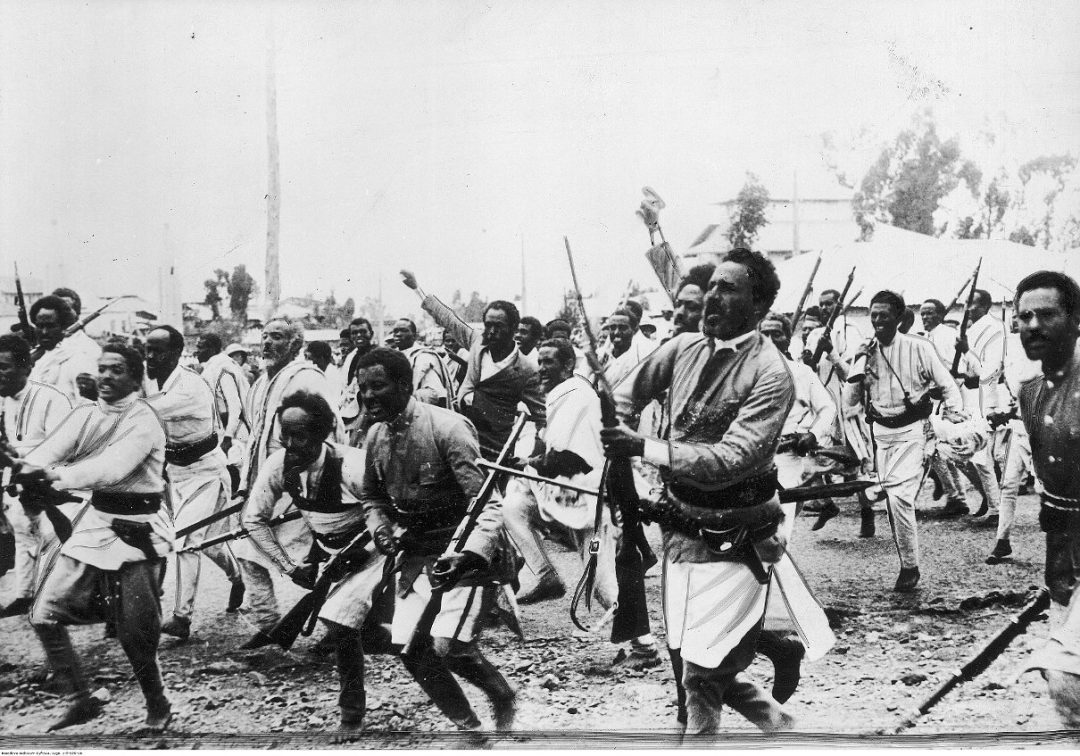
You have spoken on the role that history and historians can play in policy-making. Can the actions of policy-makers be better informed by taking history into account?
For sure, that’s exactly what historians could do. Some historians do work for governments, and they probably participate in setting up of what we call national narratives, which are ideologically and politically driven. This has always been the case. And we belong to a profession that can decide to do this as a job. But if you try to be as independent as possible as an academic, as a scholar, your job is precisely to draw the attention of policymakers to a critical kind of history, which is not about finding perfect coherencies or discourses that fit a political purpose. It’s precisely raising the awareness of political leaders and policymakers on how situations might look similar but are not identical, because history actually does not repeat itself. Thus, it is not so much about lessons learned, but more about playing on the analogies and differences, the commonalities and the variances, so that policy makers can reflect independently, autonomously. And so that they can be fully informed on situations that are taking place within national frontiers or that concern foreign policy. This is what history and historians can offer. It’s not predicting the future, but understanding the present and looking back into our past – which we cannot resurrect. We work on small fragments. We try and make sense of past and present so that we can take the best possible, informed and critical, decisions about the future.
However, sometimes policy-makers should not, will not and cannot listen to us. And this is also something that we historians have to understand. Sometimes we are fully aware that we sound like Cassandras. This is our job, and we have to defend this stance. It’s important. But they have the right not to listen, because they have a position and responsibilities which are different to ours. They might have reasons, good o bad, political and ideological, to present the past as a fairy tale.
This brings us right to next question. You have published on the stereotype of “Italiani, brava gente”, linked to the question of the protection of foreign Jews by Italians during WWII. Should nations question their national history, or are “national myths” best left alone?
Italy after 1945 was a very weak Republic, in need of precisely these kinds of unifying myths and “Italiani, brava gente” was one of those. Just like the idea that fascism was an aberration in Italian history, precisely because in fact, Italians were good people, they were benevolent occupiers, et cetera. But the research shows that, particularly in Yugoslavia and in Greece, Italian occupiers were not so benevolent; they burned down villages, executed civilians, and took civilians as hostages. The Italians – and not the Germans – were largely responsible for the Great Famine of 1941 in Greece. As you can imagine, this is something that annoys many people. It’s very unpleasant and it’s very far from the “Sagapó Army” (‘I love you’ Army) or “Una faccia, una razza” (‘Same face, same race’), and all these things that Italians and Greeks have been telling each other. Actually, during the years of the occupation many Greeks hated the Italians. The latter had attacked Greece, the Greek army had valiantly resisted and defeated the Italians in Albania; and this situation eventually led to the involvement of the Germans.
Now, memory is a very complex, layered and often contradictory, human phenomenon. And to so many Greeks, the memory of 1941-43 was erased and replaced by the very harsh occupation by the Nazis once the Italians left. Since the Nazis were losing the war, and also because the Greek resistance became way more structured and well organized, German occupation was extremely harsh: Nazi reprisals were even worse than those the Italians had practiced from 1941 to 1943. These are the reprisals that are stuck in the memory of so many Greek civilians. The memories of the Nazi occupation co-existed with yet another troubled and traumatic period in the life of so many Greeks: the Civil War that began at the end of WWII. These events and the layers of memory that go with them explain why the memory of the Italian occupation faded away.
The same goes with the story of the Italian army rescuing Jewish populations. The Italians were protecting their interests, and if this entailed saving Jewish people, they did it. But it wasn’t because they loved them. The Fascist regime’s idea was actually to create a new Mediterranean order without Mediterranean Jews. This might not be going so far as to set up a genocide, but this is a far cry from pretending that Italians were not anti-Semitic. It is extremely important that we take very seriously Italian and Fascist anti-Semitism. That doesn’t mean turning all Italians into bad people. Some of them were good people, but there were French people under Vichy who were good, Germans under the Nazis who were good people, and so forth. So being ‘good people’ is not a national trait. It’s something personal that belongs to individuals. Of course there were good Italians. That’s not the point. The point is to find a way to explain what happened based on documentation. To pretend that the Fascists were not anti-Semitic and they systematically saved Greek Jews or foreign Jews that lived in Greece means that you have not really understood what Fascism was about: it was a racist regime based on the alleged superiority of the Italian race that occupied Greece to dominate it and its populations, Jews included.
In your book “Against Massacre” you write that “by the late nineteenth century, “legal doctrines about humanitarian intervention assumed the superiority of Western, particularly Christian, civilization”. Do you believe that such concepts, although ostensibly archaic, are still latently shaping our understanding of international relations and humanitarian interventions?
I do believe that this is still the case. Many international legal scholars have been writing and publishing precisely on this topic in relation to the 21st century. So yes, it’s very subtle, but you do see an awful lot of asymmetries in the ways in which the powerful treat the powerless. Even some of the solutions of the post-Cold War era –in the 1990s and the early 2000s– were based on the assumption that not everybody’s ready for democracy, that the West has to export democracy. This is something that can be true only if you think you belong to a superior civilization. Otherwise you would be very cautious to express this idea of exporting a system of values to another place. This makes me question precisely how we go about thinking about the world, and this allegedly perfect progress towards globalization. In fact, we have evidence that intervening powers keep repeating schemes of domination based upon either military power or military plus political power, or military plus political plus economic power. This is something that will inevitably create resentment. The intervening powers will once again be perceived by those on the receiving end of these interventions as intrusive, colonial and will generate resistance.
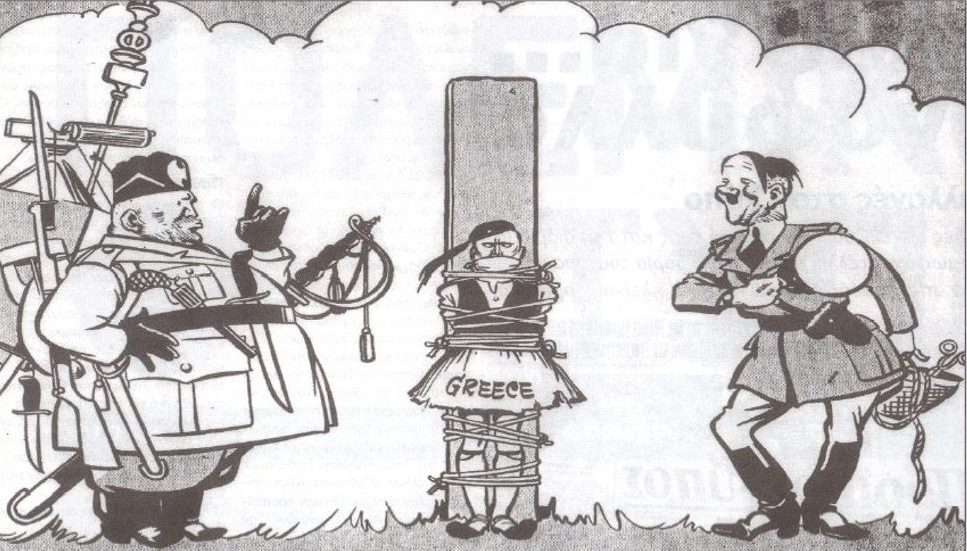
Is there any way to conduct humanitarian interventions that will not repeat this vicious cycle?
This is a very good question, because I think it’s very important for us to think positively about the future. Because if we offer just grim, depressing images and we cannot even imagine a better future, I think we commit a crime against future generations. As scholars, we have a responsibility at least to propose something different. I do believe that multilateralism is a way of doing this. If it’s done properly and it’s not just an exercise carried out by governments, but a process open to civil society, to all warring parties, etc. This is a way of dealing either with situations of impending atrocities and crimes against humanity, or in situations when massive violations of the most basic human rights are already happening. The other one that comes to mind, which is one of the pillars of the responsibility to protect, but has not been enforced because it entails more political imagination by policymakers, is working on prevention. This is something that would actually cost much less than intervening. But of course, it’s something that many governments don’t want to pay for. Since the problem is not actually there, we pretend it doesn’t exist. But then, when we intervene it’s already too late.
All these interventions we talked about have been ex-post facto. But I do believe that monitoring, drawing attention, engaging in dialogue and diplomacy are extremely useful tools in the 21st century. Negotiation and persuasion, dialogue, although they may not solve the problem completely, they can slow things down and avoid the escalation from small scale troubles to a fully fledged genocide. I think this is a good way of coping with serious issues. Why do we say “never again”? Because we hope that there won’t be another genocide. Standing passively before crimes against humanity is a stain on all of us. The idea of doing something is noble, even if the way to go about it is very, very difficult. I do believe that multilateralism plus prevention is a way forward, a way of imagining a better future. I’m not saying anything particularly original; many other scholars have been working on all these concepts. We should always try to keep cooperation, collaboration and dialogue alive.
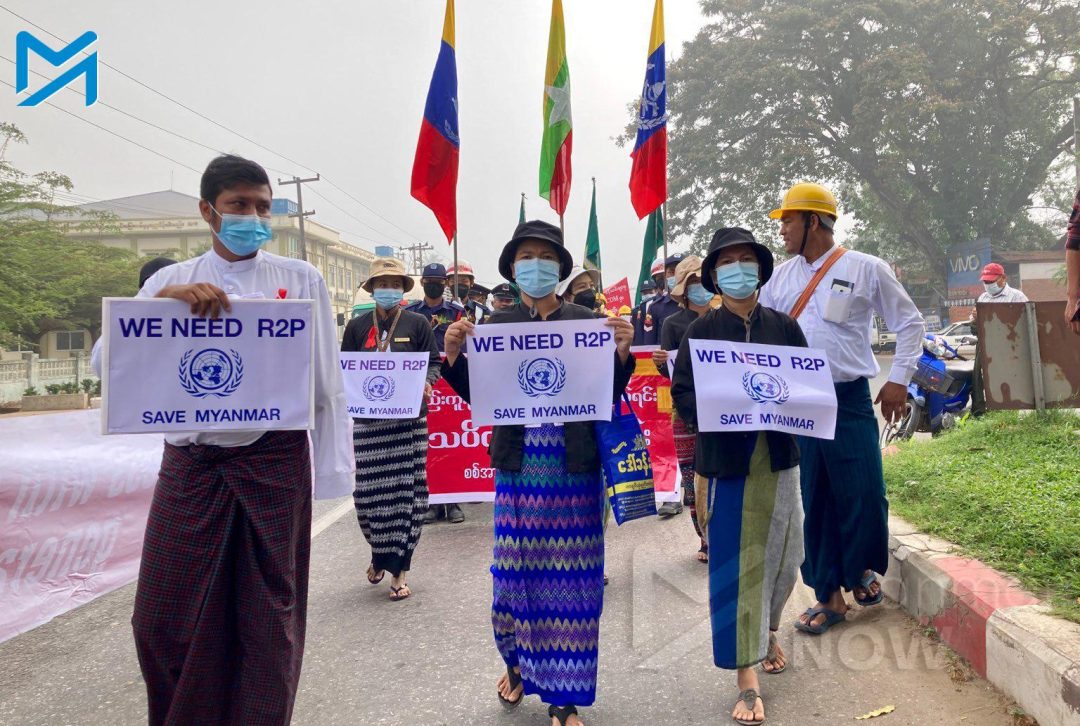
Interview to: Ioulia Livaditi; editing: Magda Hatzopoulou
TAGS: HISTORY


